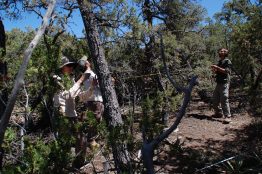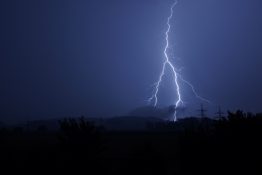Major forest die-offs due to drought, heat and beetle infestations or deforestation could have consequences far beyond the local landscape. Wiping out an entire forest can have significant effects on global climate patterns and alter vegetation on the other side of the world, according to a study led by the University of Washington and published Nov. 16 in PLOS ONE. “When trees die in one place, it can be good or bad for plants elsewhere, because it causes changes in one place that can ricochet to shift climate in another place,” said lead author Elizabeth Garcia, a UW postdoctoral researcher in atmospheric sciences.
Read more at UW Today »How lightning strikes can improve storm forecasts
Humans have always been frightened and fascinated by lightning. This month, NASA is scheduled to launch a new satellite that will provide the first nonstop, high-tech eye on lightning over the North American section of the planet. University of Washington researchers have been tracking global lightning from the ground for more than a decade. Lightning is not only about public safety — lightning strike data have recently been introduced into weather prediction, and a new UW study shows ways to apply them in storm forecasts.
Read more at UW Today »UW Environment scientists discuss what the current political climate will mean for climate education
Sarah E. Myhre, a postdoctoral scholar with the Future of Ice Initiative and the School of Oceanography at the University of Washington, and Marisa J. Borreggine, an undergraduate in the UW School of Oceanography, discuss what the election of President-elect Donald Trump will mean for their professions, their futures and our planet. Here’s a snippet of their conversation via Medium.com. Follow the link for more.
Read more at Medium »Alterations in gene expression, soil quality, and more
Each week we share the latest peer-reviewed publications coming from the College of the Environment. Over the past week, three new articles co-authored by members of the College were added to the Web of Science database. They include articles about alterations in gene expression, soil quality, and more. Read on!
Read more »Mislabeled seafood may be more sustainable, new study finds
With seafood, what you see isn’t always what you get. It’s no secret that mislabeling is rampant around the world. Recent studies estimate up to 30 percent of seafood served in restaurants and sold in supermarkets is actually something other than what is listed on the menu or label. Why mislabeling happens is a little squishier. Fraud, human error or marketing ploys — combined with an often multicountry traverse from boat to restaurant — make it possible you are eating a different fish than what’s on the menu.
Read more at UW Today »





